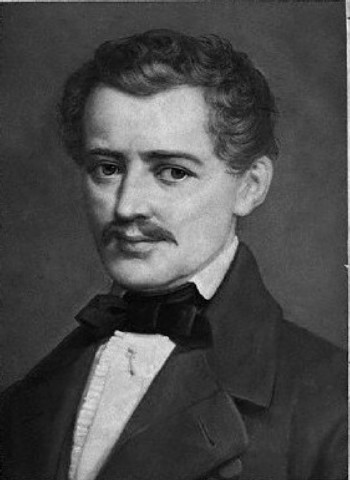The Viennese Dance Series for Chamber Ensembles
Johann Strauss Sr.
 |
Our sound-bite is of the first four waltzes. All six waltzes are relatively short, while the coda is actually as long as four of them put together.
|
Kettenbrücke Waltzes, Op.4 for String Quartet
Johann Strauss Sr.'s Kettenbrucke Waltzes are one of his very earliest compositions and were in no small part marked him as a rising star on Vienna's burgeoning waltz scene.
Johann Strauss Sr. (1804-1849) founder of the waltz dynasty that not only included the “Waltz King”, his oldest son Johann Jr., but also two younger sons, Joseph and Edward, was, along with Josef Lanner the most popular composer of Viennese dances from the Biedermeier period: 1815—1848. At least in Vienna, if not elsewhere, many of his works, such as the Radetzky March, the Kettenbrücke Waltzes, the Sperl Polka, the Champagne Galopp, and the Bajaderen Waltzes have remained as popular as Junior’s compositions.
The Kettenbrücke Waltzes (literally Chain Link Bridge Waltzes) were composed in 1828 and refer to a restaurant and dance hall called Zum Kettenbrücke (At the Chain Link Bridge). It was one of the first places Strauss worked after breaking away from Lanner's orchestra. They consist of six, beautiful, moderately slow, somewhat sad, waltzes with a fine coda.
Was this music specifically written for string quartet? It is quite likely because in those days Strauss did not yet have an established orchestra. But in any event, the Kettenbrücke Waltzes were not written for a group of more than 6-8 players. And whatever the case, Strauss immediately made arrangements for all sorts of ensembles, among them was sure to be the string quartet, an ensemble which was to be found in the evenings in nearly every Viennese cafe. Strauss himself was a violinist who had begun his career with a small ensemble--a string quartet, in fact. They played in cafes and restaurants and at small parties. Later, when fame came, he created an orchestra. At first 10 players, then 16 to 20 and on special occasions perhaps 25 to 30. But one combination he certainly never envisioned was the modern day 100 member symphony orchestra--probably the least valid arrangement of all. This type of music, first and foremost, was meant to be intimate chamber music. This is the time-honored way in which most Viennese then and now have listened to their beloved waltzes. Thus it is with pleasure that we make it available again in a version for string quartet
Parts: $13.95